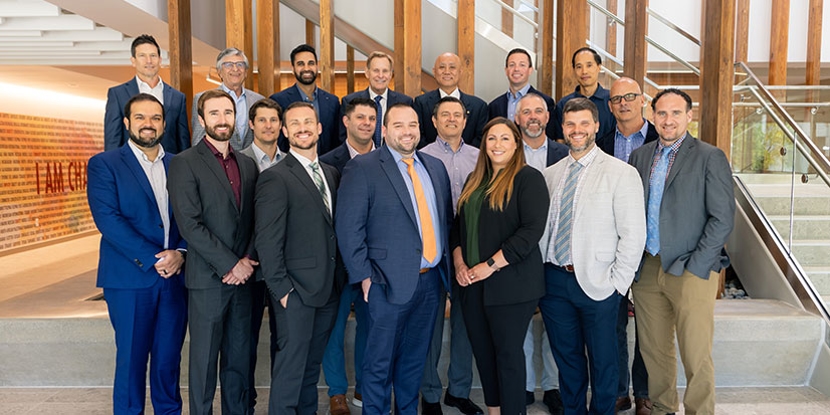Finding the Perfect Shoe
- Category: Foot & Ankle
- Posted On:
Having a comfortable walking shoe can make all the difference. We spoke to one of HOI's orthopedic foot and ankle surgeons to learn about the importance of a shoe’s fit and feel, when to replace a sneaker, and much more.
Q: What are some general things people should keep in mind when choosing a walking shoe? How should the shoes fit and feel on the foot?
A: Size is important, though sometimes difficult to get right when picking a walking shoe. Most people try on a shoe not realizing that the size of their foot will change throughout the day. The time of day, the activities you have done, or even what you have eaten, can influence the size of the shoe that fits best. Don’t anchor on a particular size because you have been that size over the years.
When I see a patient who suffers from a wrong fitting shoe, I like to start by tracing their foot on a piece of paper while they are standing. I then take their shoe and place it over that tracing. If the tracing falls outside the borders of the shoe, it is a pretty clear illustration that they have the wrong shoe size. Often this is the source of their pain and is simple to correct.
When trying on a shoe, make sure:
A) You do not feel the top of the shoe with your toes;
B) The sides and top of your foot are supported while your toes still move freely;
c) The heel cup does not slide off or pinch. The pressure around the entire foot and heel should feel cradled without any points of extra contact/pressure.
Q: What are some specific sneaker features people might need and why are they important?
A: Shoes come with a variety features that contribute to “support.” The width and flexibility of the sole is the most important. Naturally, a wider platform at the heel and the forefoot offer balance during the gait cycle from the time your heel hits the ground, to the time your toe pushes off.
A rounded midsole maintains that support from the beginning of heel strike to the end of push off, enhancing support. This is the premise behind stiff sole, rocker bottom shoes that have made a surge in the athletic shoe market more recently.
The super flexible and bendy shoes that fit like slippers may feel good when you try them on, but they compromise stability especially on uneven surfaces. As terrain changes, your foot—not your shoe—must accommodate to maintain balance. If you have arthritis in your foot or problems with ankle instability, then narrow, flexible shoes, are probably not the best shoe for you.
Q: Are there any shoe materials to steer clear from in a walking sneaker?
A: The materials that make up a walking shoe are highly variable and change from the sole on the bottom to the material that covers the toes, called the upper. In general, unless my patients are looking for a more casual look, or are concerned about the weather, I try to steer them away from shoes with leather uppers. The materials science around most modern mesh uppers gives the right balance of support, breathability, and room to accommodate most foot shapes and sizes.
Q: About how often should someone consider replacing a sneaker? What are some signs that it's time for a sneaker refresh?
A: I have to admit that I have some dress shoes that are older than my oldest teenage child. A walking shoe or sneaker is different. When these shoes begin to lose their shape, from a mechanical perspective, they go from what we call elastic deformation to plastic deformation and they no longer serve their intended purpose. Plastic deformation means that the recoil inherent in the shoe structure is permanently deformed. The shock absorption, support, and overall comfort more than likely has been compromised.
Everyone wears their shoes differently, so it’s hard to know the perfect time. If wearing them daily, I recommend getting a new pair at least every year. A shoe that is “broken in” and that you have become accustom to may not be supporting your feet the way it should. You can usually feel the difference when you try on a new pair.
Q: Any other general tips about finding the right sneaker?
Never commit to a sneaker before trying it on. Wider shoes with a higher toe box help everyone, not just those with arthritis or instability. I recommend them to my competitive athlete and elderly patients alike. Stiff sole, rocker bottom shoes are a great choice for a majority of people looking for an everyday walking shoe.


